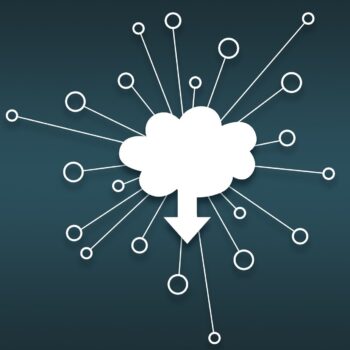
Data centering is a factor that has a decisive influence on the cloud and IT security strategy in companies. Various data processes are suitably secured depending on the regulatory requirements.
With the growing use of the cloud in recent years, more and more multi-cloud environments are emerging in companies. The main advantage of this is the high efficiency: Processes can be outsourced to the most suitable providers at the lowest possible cost. Further side effects for companies are higher reliability, scalability and stability of IT processes. Properties that have recently been in great demand, especially for remote operation.
Increased attack surface in the multi-cloud
With the use of various SaaS applications, IaaS platforms and, if necessary, working at many distributed locations with unmanaged devices, the attack surface for malicious actors increases massively. Disparate security solutions are not powerful enough for such scenarios. This makes it much more difficult for IT administrators to enforce policies across the entire environment. In addition, working in different solutions increases the susceptibility to errors and the likelihood of data security incidents. The efficiency that is gained through the multi-cloud is thus eliminated again by the resulting risks in data security. In the long term, this poses a problem, because the security of data as a prerequisite for customer loyalty and efficient business processes are factors that contribute to the competitiveness of companies. For organizations that are thinking about completing the next phase in their digital transformation process, this can be a reason to postpone their project for the time being.
Multi-cloud use is changing the requirements for IT security
Making compromises in terms of efficiency - i.e. using cloud services only to the extent that data security can be guaranteed with conventional solutions - is not a viable alternative. “The spirit is out of the bottle” is a saying for developments that cannot be reversed. In IT, this also applies to cloud technology. If the market offers an attractive solution that is advantageous for customers - such as using different cloud providers - at some point the buyers will also use this technology to strengthen their own position.
The points of attack on data are diverse in cloud structures. The risk is strongly influenced by the way in which the cloud is used and how the users behave. Securing all connected end devices is time-consuming, cost-intensive and can hardly be reconciled with current work practices. Online access can be protected via VPN, but it has a greater impact on application performance. The smooth transition to remote emergency operation, for example, cannot be achieved in this way.
Remote scenarios and data security
To ensure data security even in remote scenarios, companies instead need solutions that provide consistent security for their entire cloud environment, including SaaS, IaaS, on-premises applications, web targets and connected devices. This security concept is mapped in Secure Access Services Edge (SASE) technologies. SASE provides cloud-based, consolidated network and security solutions that can be used as required. This ensures effective and secure access to corporate IT resources and is suitable for both multi-cloud and hybrid environments.
SASE platforms offer the following functions, among others:
- Cloud Access Security Brokers (CASBs) provide end-to-end protection for data in every cloud service and device, including IaaS platforms like Azure or AWS and managed applications like Office 365.
- Secure Web Gateways (SWGs), which bypass the latency, cost, and scalability issues associated with legacy architectures, decrypt web traffic to prevent data leakage as it is uploaded and block threat URLs before they can be accessed.
- Zero-Trust Network Access (ZTNA) grants remote workers secure access to certain on-site resources. Contrasted with VPN, which gives users access to all network resources.
- Domain Name System (DNS) technologies identify and eliminate risks and threats. For example, if malware is discovered, the relevant DNS server uses sinkhole access to prevent the infection.
- Firewall-as-a-Service (FWaaS) tools allow the use of port, protocol and application-based guidelines for network access and segmentation. You can also provide modules for Quality of Service (QoS), IPS, IDS, and VPNs.
- SD-WAN protects network access with a secure site-to-site connection.
The advantage is that a data-centric security strategy can be implemented with minimal administrative effort in a heterogeneous IT environment that extends across various cloud offerings: Admins can secure all interactions in a single dashboard. This gives companies the opportunity to take advantage of the efficiency advantages of the multi-cloud with high data security standards. In this way, they can continue to drive their digital transformation and strengthen their market position.
[starboxid=4]
